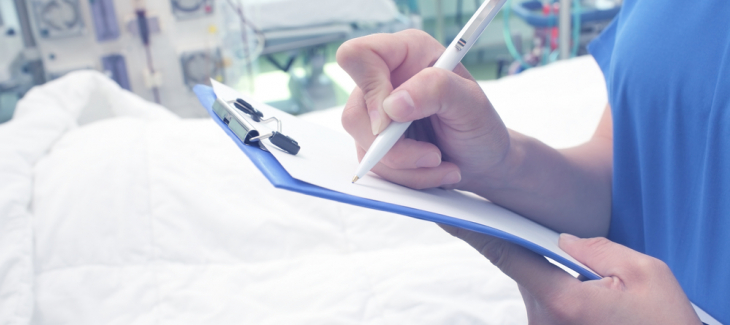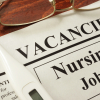- Featured
- News and Events
- Legal
- Career Trends
- Technology
- Training
- Procedures
- Nursing
- Advanced Practice
- How To
- Candidate News
- Employer News
- Nurse Practitioners
- Registered Nurses
- Telehealth
Recent Posts
Most Popular
The Best Techniques To Assess Patients Effectively

Assessment is the first step in the nursing process. As a nurse, it’s essential to perform a thorough, detailed, and precise assessment of your patients to create a personalized plan of care.
The Nursing Assessment – Two Parts
Two parts encompass the nursing assessment. The first part is a verbal assessment and review of medical history. The second portion of the nursing assessment consists of a hands-on exam. Both are critical to the care of the patient, especially if something goes wrong. If a status change happens with the patient, the doctor will look to you for the complete medical history.
Part One – Review and Verbal Assessment
During the review and verbal evaluation, ask your patient about the following factors:
- Rights of the Patient – Review with the patient and their family the legal right they have regarding their healthcare decisions.
- Valuables – Make sure to note any valuables the patient has on them or with them, which might include rings, earrings, other jewelry, and money. Encourage the patient’s family to take valuables home to avoid getting lost.
- Activities of Daily Living – Ask the patient if they can complete their activities of daily living on their own or with assistance. Inquire if they use a walker or cane at home. Patients often don’t use their aid if they feel they don’t have to, but hospital staff should be aware of the possible fall risk.
- Falls – Inquire if the patient has fallen in the last six months. Know the risks and provide aids to help make sure the patient doesn’t slip while in the hospital. A few preventative measures include keeping the call light in reach and providing non-slip socks.
- Psychosocial – Ask about the patients mental state. Do they need a sitter or suicide precautions? Are they forgetful? If the patient has a family member present, talking to them about these risks might be helpful.
- Nutritional status – A thorough nutritional assessment helps gather information about the patient’s overall health status. A sample question to consider includes, “Have you gained or lost weight recently?” You will also want to know if they have experienced a recent change in appetite.
- Past Medical History – Ask the patient to tell you all conditions they are currently being treated for or have seen a doctor for in the past.
- Pain – A simple way to start the pain assessment is to ask, “Are you experiencing any pain today?” You will also want the patient to describe the intensity of the pain and if anything makes it better or worse.
- Allergies – Asking the patient, “Are you allergic to any medications or food?” will help you establish the presence of allergies that could be dangerous or life-threatening.
- Medications – Question the patient about their medications by asking, “Are you taking any medication currently, including over the counter medications and any herbal supplements?”
Part Two – Hands On
After conducting a history through verbal questions and chart review, it’s time for the physical portion of the assessment. After you become comfortable, perform the physical and verbal evaluations at the same time.
Review the following:
- Cardiovascular system – Listen to their heart, apically. What sounds do you hear? Is it a regular rhythm? Does the patient have any edema?
- Respiratory – Listen to their breath sounds, are they clear? If not, how would you describe the lung sounds –rales, rhonchi, or wheezing? Does the patient have a cough and does their chest rise and fall equally on both sides? Observe for signs of shortness of breath? It’s important to note their respiratory effort while at rest, talking, and with activity.
- Gastrointestinal – Listen to the patient’s abdomen in the four quadrants. Do they have bowel sounds? Palpate the abdomen, noting if it is soft, tender, or hard to the touch. Are they experiencing any nausea, vomiting, diarrhea, or constipation?
- Genitourinary – Does the patient void on their own, or do they have a temporary or permanent catheter? Are they experiencing any frequency or urgency with urination?
- Neuromuscular – Assess the patient’s level of consciousness. Is their speech clear or garbled? Are their movements equal? Do they have any weakness in their extremities? Are their pupils equal in size? Have them squeeze your hands to assess if their grip strength is strong, weak, equal, or unequal.
- Integumentary – Be sure to do a full body skin assessment to note any areas of breakdown. Assess the turgor, integrity, color, and temperature of the skin.
After the two-part assessment, take the data and evaluate the findings. To assess the data, you can use an SBAR Model. SBAR can also help you prepare to give pertinent information to a physician, receiving area during transport, or the next nurse caring for the patient.
You need to know what each of the letters stands for to utilize the SBAR method. Fill in the components of SBAR, making sure to address all the areas of the two-part assessment.
Situation: Briefly define the situation in a clear manner.
Background: Add relevant background information relating to the situation.
Assessment: After you perform the two-part assessment, provide your professional conclusion.
Recommendation: What recommendations do you have for this patient that you need to clarify with the physician?
A thorough nursing assessment is part of excellent patient care that enables you to gather information to add other members of the healthcare team, such as physical or respiratory therapy if needed. Remember to do all parts of the nursing assessment, use a checklist if you have to to make it easier to perform. You will be an excellent nurse if you complete a thorough assessment of every patient.








Comments